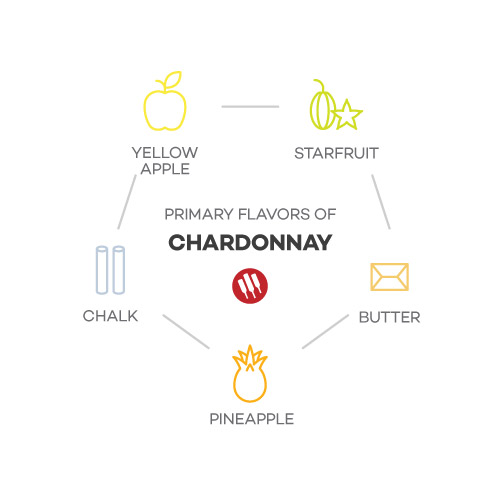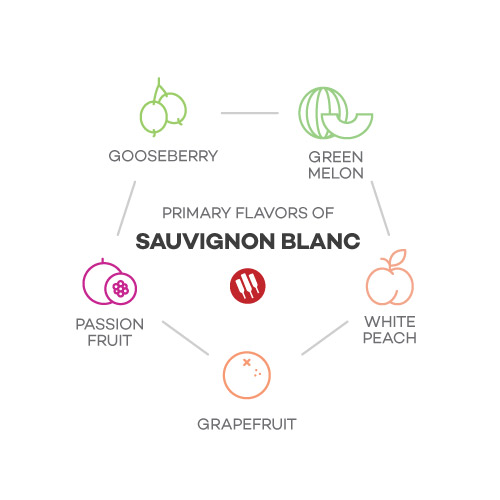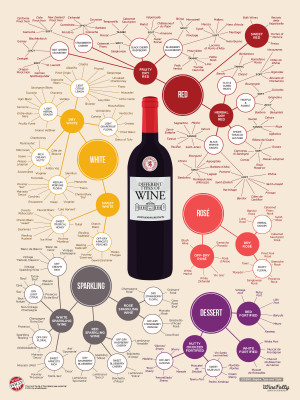What’s the difference between Chardonnay and Sauvignon Blanc?
Chardonnay and Sauvignon Blanc are two of the most popular white wines in the world. Each wine represents a very different style and taste of dry white wine. Let’s take a closer look at their differences to find out which one you prefer.
Chardonnay vs. Sauvignon Blanc
Chardonnay
Details
Chardonnay is a wine grape that originated in Burgundy, France and often grows best alongside the other Burgundy wine: Pinot Noir.
- World Acreage: 491,000 (2010)
- Cost for Quality: $15–$20
- Regions for good cheap Chardonnay: Spain, Chile, Italy, Australia, Languedoc (Southern France)
- Regions for great Chardonnay: North Coast California (includes Sonoma and Napa), Oregon, Côtes de Beaune (France), Jura (France), New Zealand
Sauvignon Blanc
Details
Sauvignon Blanc is a wine grape that originated in Bordeaux and Loire, France and grows alongside other Bordeaux varieties, including Merlot and Cabernet Sauvignon.
- World Acreage: 272,000 (2010)
- Cost for Quality: $10–$14
- Regions for good cheap Sauvignon Blanc: Chile, Pays d’Oc (Southern France), Friuli Venezia-Giulia (Italy)
- Regions for great Sauvignon Blanc: New Zealand; Loire Valley (France–includes Sancerre and Pouilly Fumé), North Coast (California), Yakima Valley (Washington)
Chardonnay Taste

Chardonnay is a dry, full-bodied white wine with primary fruit flavors of apple, yellow melon and starfruit. Since it’s one of the few white wines that is commonly aged in oak, you’ll often find Chardonnay will taste of cream, vanilla or butter. So, when seeking a Chardonnay, there are two different styles that you can easily identify by production method: oak vs. unoaked. In truth, any white wine aged in oak and will develop creamy, vanilla-like flavors, but since most white wines are made in a light, zesty, and floral style, oak is relatively rare.

Chardonnay Food Pairing
Foods best with Chardonnay tend towards the more creamy and delicate flavor end of the spectrum, think chicken with chardonnay-cream mustard sauce, crab cakes, lobster, shrimp and linguini, or classic french-style quiche. If you don’t eat dairy or meat, focus on dishes with creamy-like sauces using almond milk, cauliflower or a nut-based sauces like cashew cream or tahini.
See the Advanced Food and Wine Chart for more details
Sauvignon Blanc Taste

Sauvignon Blanc is a dry, light bodied wine that bursts with a powerful aroma that is easiest to describe as “super green!” Depending on where the wine was made (cool vs. warm climate), you’ll find the green notes range from savory flavors of fresh cut grass, gooseberry, and even jalapeño, to sweeter fruitier green notes of grapefruit, white peach and passion fruit. What’s interesting to note is that in high end Sauvignon Blanc wines, such as from the Pessac-Leognan region or Bordeaux or in the Yakima Valley of Washington, producers will often age wines on oak, adding the same rich creamy flavors to the mix.

Sauvignon Blanc Food Pairing
Sauvignon Blanc has such a high intensity it opens it up to a wider range of potential pairings. The classic local French cheese pairing is with goat cheese but you’ll find it perfect alongside fish tacos, gyros and tabouli salad, Mediterranean style meats with lemon, capers and olives, and chicken pot pie. Sauvignon Blanc also sings with Thai and Vietnamese food, especially when there’s cilantro in your dish.
Conclusion
White wine is a lot more varied than most people think. There is growing number of people –experts and consumers alike– choosing whites over reds as their daily drinking wines. Embrace your style and start exploring!

Explore Wines By How They Taste
See over 200 different types of wine organized by style and taste – a fun and visual way to get to know more of the wines you’ll love!
See Chart
